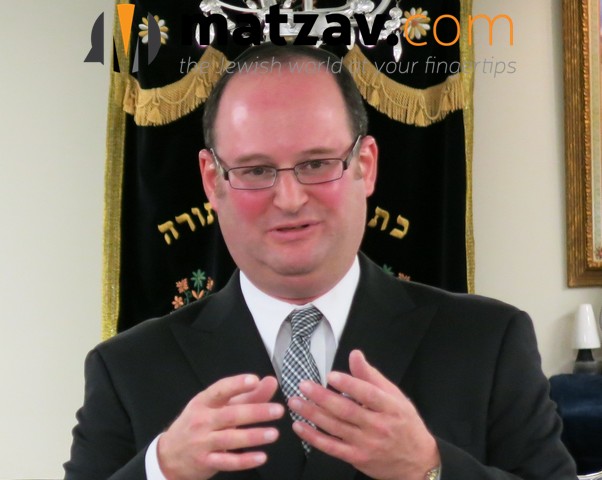
“Come unto Pharaoh, for I have hardened his heart and the heart of his servants, in order to perform My signs in their midst. And in order that you tell your children and grandchildren all that I did in Mitzrayim, and the signs that I performed therein, so that you know that I am Hashem…. And Moshe and Aharon came to Pharaoh and said to him: Thus says Hashem, the God of the Hebrews, ‘How long will you refuse to be humbled before Me? Send forth My nation, and they will serve Me. For if you refuse to send forth My nation, behold I will bring locusts tomorrow into your borders…’” (Shemos 10:1-4)
The above passage is striking, for one would expect Hashem to command Moshe to speak to Pharaoh for the sake of setting B’nei Yisroel free, and for Hashem to then inform Moshe about a separate point – that Pharaoh’s heart has been hardened and he will not listen (and Moshe should therefore not be disappointed), and that the result will be Hashem’s performance of wondrous signs as part of the subsequent Exodus. Instead, the Torah relates that Hashem told Moshe to approach Pharaoh because Pharaoh’s heart was hardened, for the purpose of miraculous signs to occur.
How are we to understand this perplexing and mysterious passage? What does it signify?
The answer is that Pharaoh was at this point a mere implement for Hashem’s performance of wondrous signs, due to Pharaoh having already forfeited his free will as a result of his repeated evil and stubbornness. (Please see the end of this d’var Torah for an explanation of Pharaoh losing his free will.) Pharaoh was now a piece in a much larger picture, and was being manipulated by Hashem to accomplish a Divine goal of momentous historic import. Pharaoh could now be compared to a key that is used to allow one to enter a magnificent edifice, or to a button that is pressed to activate a seismic reaction. It was no longer about Pharaoh, but about an incomparably greater reality.
This is the significance of the Torah’s phraseology of “come to Pharaoh”, for Hashem was telling Moshe that Pharaoh was now a mere instrument who was operating under the control of Hashem Himself. Hashem bid Moshe, “Come, to Pharaoh, for I am here with him, waiting for you to state your demand, whereupon I will make him refuse, and amazing things will ensue that will change history. I am here controlling Pharaoh; come here and do what is necessary to activate a chain of earth-shattering events that will impact all future generations.”
The broader lesson is that although we must of course do that which Hashem instructs us, we must also be aware that our actions, and all that transpires, are part of a broader picture of which we are so often unaware. Had Moshe not been informed by Hashem of the true function of appealing to Pharaoh yet again, Moshe would have believed that the purpose of this new meeting with Pharaoh was simply an empty and futile attempt to persuade one who cannot be persuaded. But Hashem tells Moshe that there is infinitely more going on than meets the eye. We need to do our part, and the result may be profound beyond imagination.
Why does this new entreaty of Moshe to Pharaoh serve as the introduction for Makkas Arbeh (the Plague of Locusts)? Is there any connection between the special nature of this new communication with Pharaoh and the message of Makkas Arbeh?
Although all of the Makkos were awesome and overpowering, their face value was apparent. The potency of each of the Makkos prior to Arbeh matched the contents of that Makkah, as wondrous as every Makkah surely was. But Arbeh was different, for every locust on its own would have been inconsequential (unlike the case of a mere few frogs in one’s bed, a few lice crawling on one’s arm, or a few painful and sizzling boils on one’s leg); it was the indescribably excessive mass of locusts that gave Makkas Arbeh its cataclysmic force. “And they (the locusts) shall cover the entire land, making it not even visible, and they shall devour all that grows and fill everyone’s homes, the likes of which your ancestors have never seen… And the locusts saturated the entirety of Mitzrayim very heavily… and the whole land became dark…” (Shemos 10:5,6,14,15) The impact of Makkas Arbeh was immensely more intense and far-reaching than the simple presence of locusts, even many of them, for Makkas Arbeh heralded a foreboding and devastating panic and sense of obliteration, despite each locust on its own being basically innocuous.
In other words, Makkas Arbeh represents a much larger and profound reality than would otherwise meet the eye. That which would seem to be inherently nonthreatening, or hazardous to agriculture in a defined manner, became a source of anxiety and even hysteria, as it was so utterly imposing and pervasive. This is the connection to Moshe’s coming to Pharaoh in order to be deflected and for Hashem’s wonders to then spring into action, for in both cases, something far more deep, broad and profound was occurring, far exceeding otherwise simple perception.
May Hashem again soon manipulate world events before our very eyes and beyond our comprehension, in order to bring about the final Geulah.











